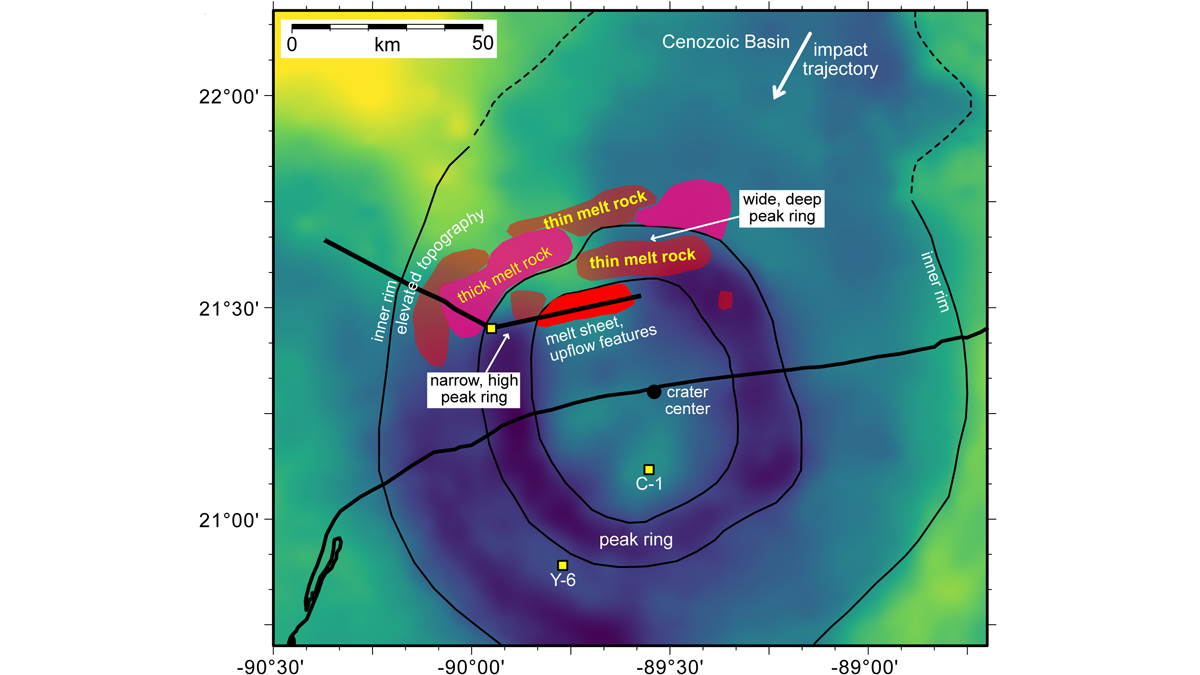Editors’ Highlights are summaries of recent papers by AGU’s journal editors.
Source: Journal of Geophysical Research: Planets
The Chicxulub impact crater on the Yucatan peninsula of Mexico is not just famous as the “dinosaur-killer” impact event. It also provides an unparalleled opportunity to study a large peak-ring crater on the Earth. Buried by more recent sediments, it is impossible to visit the crater directly. However, its location dominantly underwater makes it possible to conduct systematic ship-based seismic surveys.
Christeson et al. [2021] discuss in unprecedented detail the characteristics of the northern section of the peak ring obtained by integrating high-resolution full-waveform seismic velocity inversions, seismic reflection images, and a scientific drill core. They provide evidence that a tsunami-like ocean wave produced as the ocean filled the newly created impact crater was of substantial height, highly energetic, and sudden. The resulting deposits were modified by hydrothermal circulation driven by the cooling of a thick layer of melt that pooled in the innermost crater. Importantly, they provide evidence for the peak rink even where it has no topographic expression in the buried crater. This implies that the peak ring of craters on other planets may constitute a continuous structure even if they appear as a ring of isolated peaks.
Citation: Christeson, G. L., Morgan, J. V., & Gulick, S. P. S. [2021]. Mapping the Chicxulub impact stratigraphy and peak ring using drilling and seismic data. Journal of Geophysical Research: Planets, 126, e2021JE006938. https://doi.org/10.1029/2021JE006938
—Laurent G. J. Montési, Editor-in-Chief, JGR: Planets

